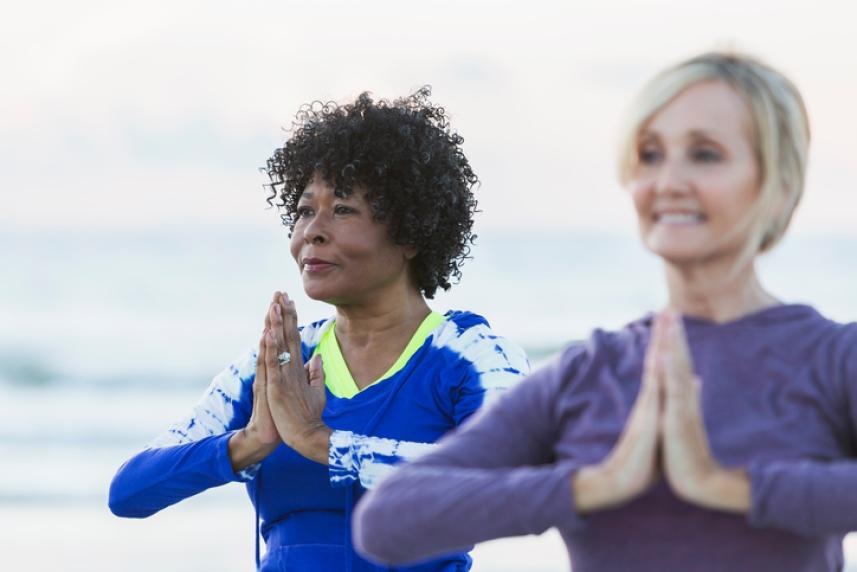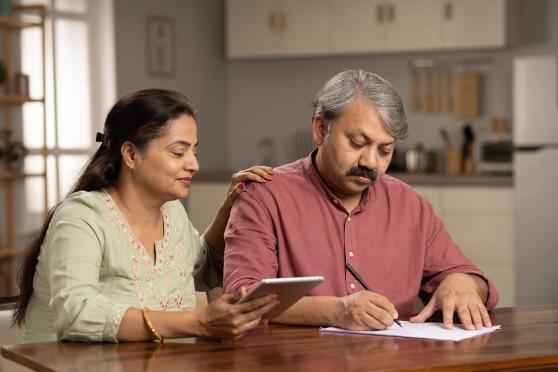Meditate for amazing benefits
Meditation is certainly not new. But as more and more studies show the benefits, it’s worth a second look if you’re not currently making meditation part of your daily health routine.

“Over the past 20 years, research on meditation has increased dramatically,” says Roxane Raffin Chan, an assistant professor at Michigan State University College of Nursing who has a research interest in meditation. And the findings are pretty amazing—especially what’s termed the relaxation response, which has been linked with lower blood pressure, improvement in symptoms of irritable bowel syndrome and ulcerative colitis, relief from anxiety and depression, better sleep, and pain relief.
Even if you feel perfectly healthy, meditation helps you become better able to respond to life events, says Chan. “Without necessarily feeling anything different, your breathing and your heart rate will coordinate in a very special manner,” she says. “When this happens, it returns your body’s physiology to a more flexible state, better able to respond to the social, emotional, and physical experiences of everyday life.”
Maybe the best part about meditation: Anyone can do it. Ready to give meditation a try? Here are a few expert tips.
Know all the modes. “Think of meditation the same way you think of exercise,” suggests Chan. “There are many ways to get exercise. Some exercises are as simple as going for a walk around your neighborhood, while others are demanding and complex, like playing tennis at Wimbledon.” There are three basic meditation practices.
- Informal practice: This first level brings mindfulness into your daily life by practicing very short meditations, as little as three breaths long.
- Focused meditation: “Pick one thing to pay attention to, perhaps a word or a sensation, like your breathing,” says Chan. “At each breath, you call to mind that word or sensation. As you sit and focus on this one thing, your mind will wander. The work you will do is to bring your attention back to your chosen focus.” This meditation is best practiced for 10 to 20 minutes daily, or at least most days.
- Open or insight meditation: In this practice, you do not pick a focus; rather, you practice being open to whatever sensations, thoughts, or emotions come to mind. “During this practice, the work is to experience that awareness, release that awareness, and become prepared to be aware of the next sensation, thought, or emotion,” says Chan. “This practice is more difficult because you come in direct contact with things that might be upsetting, like pain, difficult emotions, or confusing thoughts.” As a beginner, you can start to experience this type of meditation by using sounds. “You can sit and be aware of a sound, acknowledge that sound, release awareness to that sound, and become ready to be aware of the next sound,” suggests Chan. “In this way, you can practice the process without the need to focus on potentially difficult sensations.”
Get started. “Much like physical exercise, it is best to start where you are comfortable and with something you will enjoy,” says Chan. Some options:
- Try breathing cues. “You might find a lovely sound that occurs in your life, such as birds singing outside your window or the laughter of your children,” suggests Chan. “You can then use that sound as a reminder to stop and take five breaths while being fully aware of those breaths.”
- Notice sensations. Pick one activity you do frequently, such as walking to the mailbox, washing the dishes, or brushing your teeth. Then make a decision to do these things in a meditative manner by paying attention to just this activity and releasing all of your other thoughts. “Let yourself be fully present to the feel of the road under your feet as you walk, the temperature of the water, or the taste of the toothpaste,” says Chan.
- Learn from a teacher. Take a class in mindfulness-based stress reduction “You can also read books from current meditation teachers, such as Thich Naht Hanh, Jack Kornfield, Jon Kabat-Zinn,” says Chan. “Most modern teachers also have audio files or YouTube videos.”
Keep it up. Positive results can be detected after one meditation session, says Chan. “However, results are more consistent the longer you practice.” Feeling bored or stuck in a rut with your meditation practice? “Find some new, enjoyable practice to try,” suggests Chan. “Perhaps you might try walking a labyrinth, joining a group for a time of silence, or going out to eat alone and spending the time to taste every bite of food.” For a different meditation experience, participate in a drum circle or joining a laughter yoga class.


